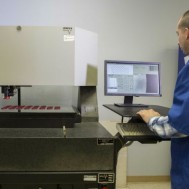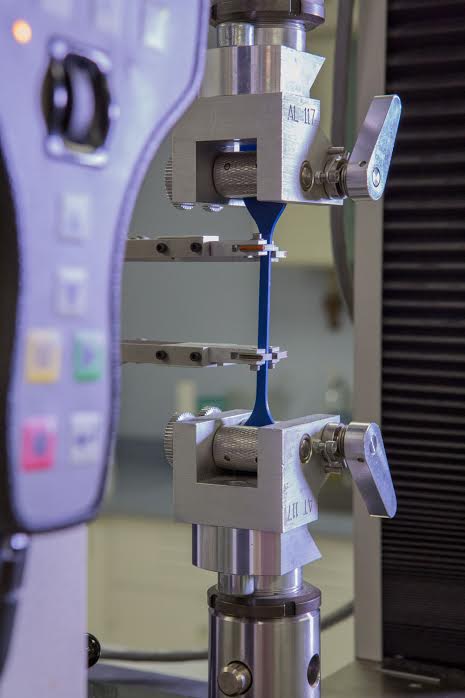As you might imagine, Quality Control is where Apple Rubber products are tested. They are verified to ensure that they consistently meet all their specifications and that they have been built according to the design.
We spoke with Apple Rubber QC Lab Supervisor Dennis Popp (pictured, right) to get the QC story.
Apple Blog: What are the basics of the QC Lab?
Dennis Popp: We have the ability to do PPAP (production part approval process), PPQ (Process Performance Qualification), stat packs, and dimensional layouts. We are measuring to a quality standard set by our customers or industry.
We perform gauge “R and R” (repeatability and reproducibility) testing. That’s what a PPAP is–a quality standard. Particularly for our automotive industry customers, in order to move a product through the system, you must perform that process.
We have capability to produce a First Article Report in any format, including meeting AS9102 to satisfy our Aerospace Customers.
Stat pack (Statistical Package) is a capability analysis, to see how well our product can meet the tolerances that are put on a dimension. It also is a measure of the manufacturing process–process capability index is calculated to determine how centered to a tolerance your process is. This will show the ability to hold a dimension over a longer run.
AB: What do you with raw material lot qualification?
DP: When we receive a new raw material lot in the door, we have a slab made and then perform durometer (hardness) testing on it. We cut dumbbells out of the rubber slab and then pull tensile and elongation tests. Then we would perform FTIR testing– we take a scan of the rubber to make sure that it has the right chemical makeup according to set requirements.
One of our final tests is a compression set, see the bounce-back. This is done to essentially determine how much the rubber comes back to its state before it was compressed. This is critical to the sealing industry. Too high of a compression set can lead to premature failures of a seal.
Our lot traceability is excellent. We are able to track material from the receiving door through to the customer.
AB: What about the non-contact measurements?
DP: Great question. Non-contact measuring checks the dimensions of the product–we can place orings or gaskets on vision machines and measure the diameter, angle and radius.
AB: What does “full calibration traceable to standards” mean?
DP: NIST (National Institute of Standards and Technology) sets the gauge parameters. In our calibration program, we perform a lot in-house. But some of our gauges which we are not able to calibrate, are sent to an outside source that is NIST traceable.
Each industry has its own unique calibration and tolerances. In-house calibration is performed on calipers, pyrometers and micrometers to gauge hardness and blocks that are traceable to NIST.
AB: Are you trouble-shooting?
DP: Yes. When customers have issues or concerns with material or functionality of the product, they send it in. Along with the engineering department, we help verify and make sure we are giving them the best product available. When a tool is made from a new mold, we also verify that the tool is correct before it’s put into production.
AB: Anything else you’d like to add?
DP: That is just a brief overview. We can perform numerous other material tests, like reverse engineer to give identical parts for new sourcing and give complete documentation for customer’s quality compliance. Our QC lab is a value-added department that assures our customers they will be getting the same quality with every single shipment.
Thanks, Dennis! Learn more about Apple Rubber’s QC lab at our website.

